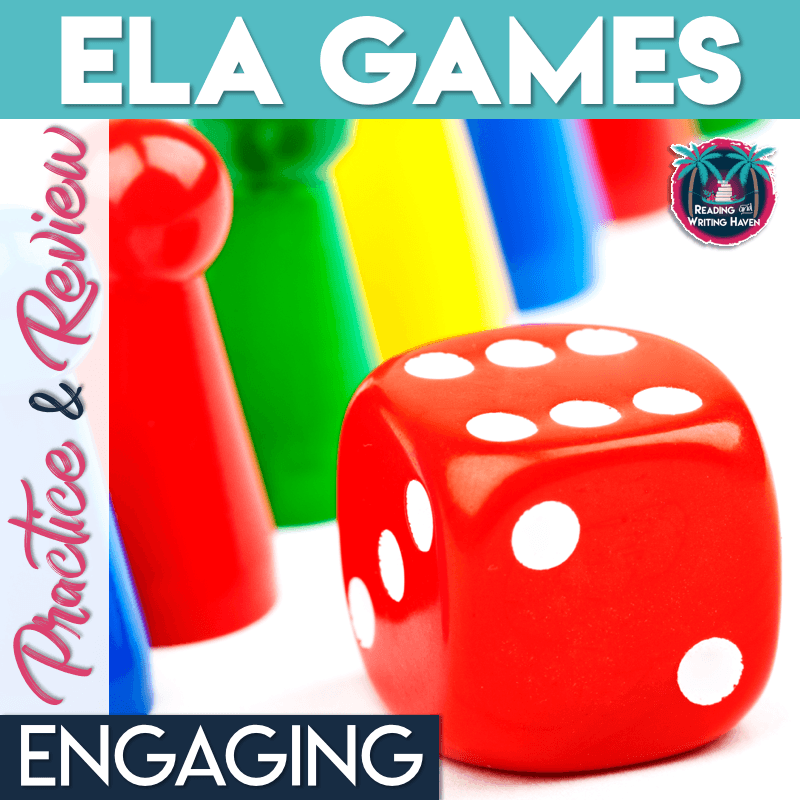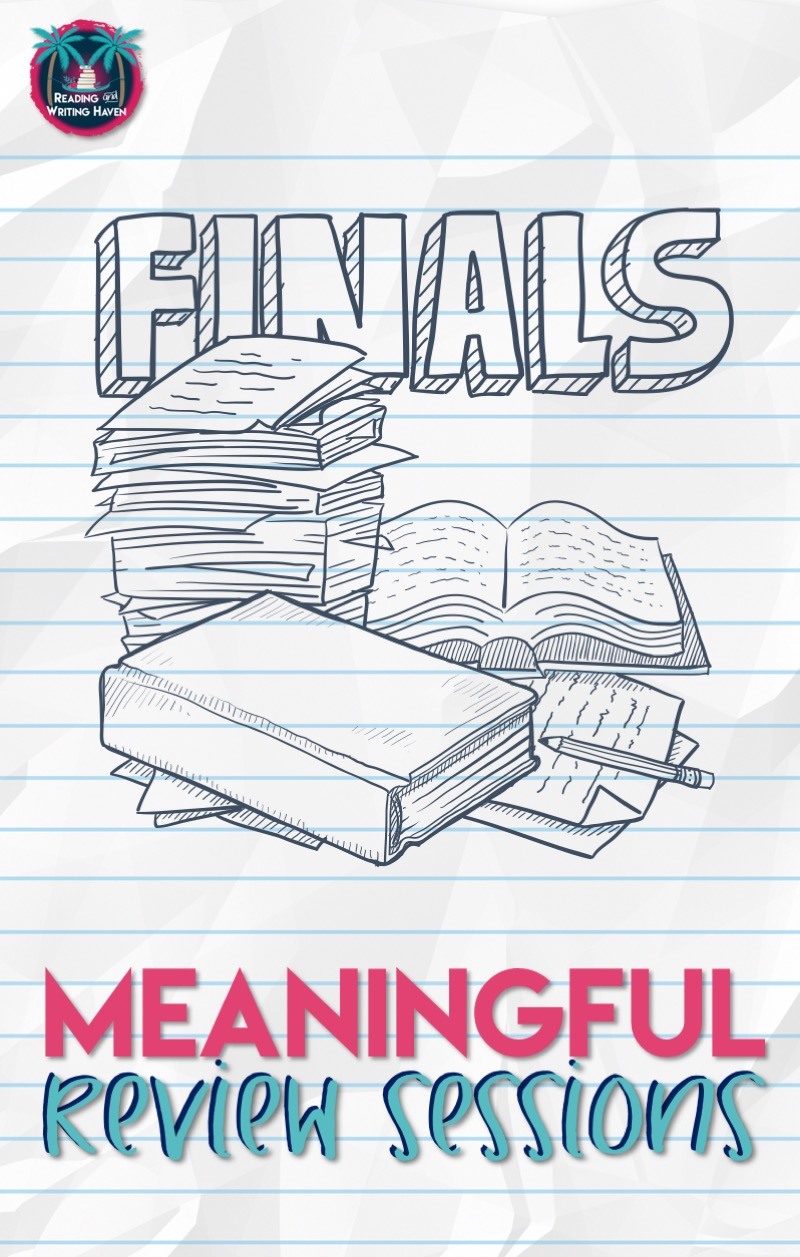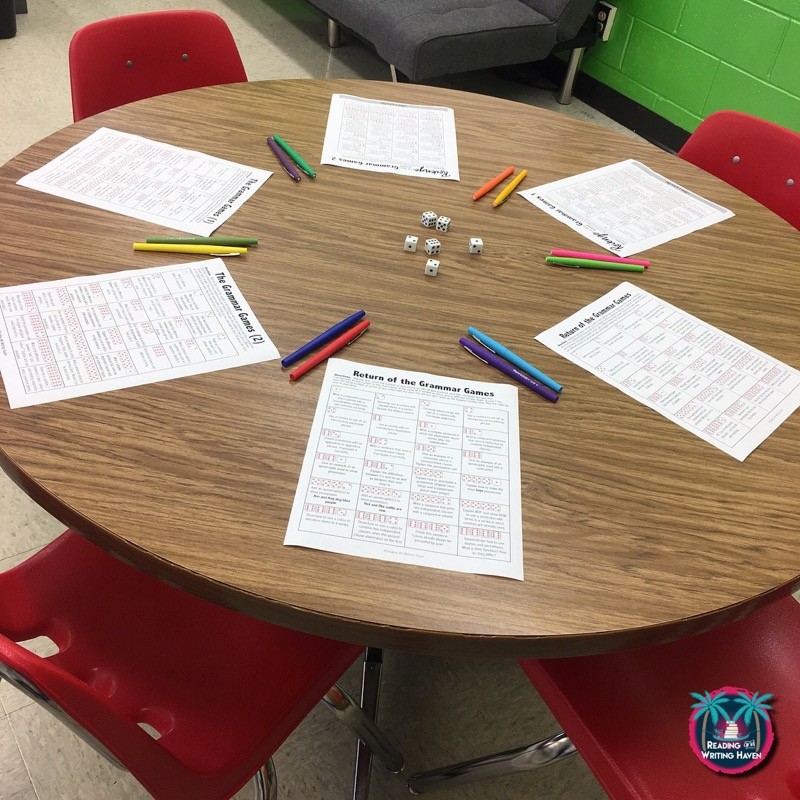Meaningful Final Exam Review Sessions
When I first began teaching high school, I had no idea what to do with final exam review time. Was I supposed to reteach or review? How many days should I spend on it? Should it be fun or serious? Since then, I’ve tried a variety of approaches. Designing effective and meaningful final exam review sessions for secondary students is fun now.
Over the last decade, I’ve sensed increasing pressure on teachers to run well-organized review sessions. There are schools of thinking which indicate that students should be responsible for independently reviewing the material they learned over the course of the semester or year. In practicality, it doesn’t work that way (at least for me).
Final exams can be overwhelming for secondary students. They might not know where to start, how to study, or what terms to focus on. Rather than throw my hands in the air and say, “I’ve already taught you this once, so now it’s up to you,” I’ve learned to make the most of the time.
Educators can help students mentally prepare for final exams by organizing review sessions that ease students’ anxiety and help them to focus on the key concepts. One of the main goals of a review session should be to scaffold secondary students’ studying experiences to help them succeed. There’s no one right way to prepare students for final exams, but some strategies are more effective than others.
Maximize the Study Guide
When should I give it to students?
Study guides come in many shapes and sizes. I always give my students their study guide one week prior to exams. This way, they don’t quite have enough time to lose it or forget about it, but they also have enough time to prepare adequately.
On the day I hand out the study guide, I usually spend about fifteen minutes reading through it with students so they can ask questions. Reading through the study guide in class forces them to start thinking about the information, and it makes them aware of how much or how little they need to study.
As we go over the details, I have students annotate the topics. I ask them to draw a smiley face or a star next to any information they feel confident about, and to draw a question mark next to anything that confuses them.
How should a study guide be designed?
When I create my study guides, I think about my students’ needs. I teach enriched, academic, and co-taught freshmen. Each of these classes has very different readiness levels and differentiation demands.
- For my enriched students, I usually give them a list of the key concepts. I leave it up to them to go back to their course notes and videos and be in charge of figuring out what they know and don’t know. These students are generally intrinsically motivated, and I want them to be as self-sufficient as possible, knowing that most of them will move on to four-year universities (where study skills will be essential) after high school.
- The academic classes need a little more support, so I create a study guide that can be filled in. I leave room for students to write definitions and examples of vocabulary and important concepts, and I also ask specific questions they need to answer; however, I never put exact test questions on my review guides.
- My co-taught classes, which are comprised of special education and at-risk students, need more scaffolding. For them, I paraphrase (some of the more difficult) test questions and provide word banks because many of them struggle with organization and lack the desire to look back through their notes for answers. Another accommodation I’ve learned to provide is to write the exact title of the notes where students can find the answers to each question.
No matter the level, I always update my study guides every year to make sure they are completely accurate. I don’t include any “fluff” — concepts that “might be” on the exam. I only include the terms and skills students must know, and I also make sure to emphasize any concepts that could be deemed “difficult” or “tricky.”
Should the study guide be worth a grade?
When I first began teaching, my final exam study guides were required, and I gave students a grade for them. However, over time, I saw a few issues with this approach.
- I didn’t have enough time to actually grade the assignment. Since students needed it to study for the exam, I couldn’t collect it until test day.
- Students felt obligated to fill out the study guide, so they copied someone else’s.
- Many didn’t actually use it as a study tool.
Basically, it was ineffective all around. I got smarter and adapted. Students don’t all study the same way, so I decided to make the study guide optional. It was a study tool that was available to them, but it wasn’t mandatory. This approach resulted in fewer battles, better conversations with parents, and less stress for me.
Teach Students How to Study
Have you ever asked students how they prepare for a big test? To my dismay, many of my own teens have no clue, responding with comments like, “I read the study guide,” “I re-read the chapters,” or (the dreaded) “I don’t know.” After you pass out the final exam review guide, I think it’s important to give students some suggestions for how they can engage with the material on their own in meaningful ways. The list of possibilities is long, but here are a few options I share with my classes:
- Fill out said study guides (as mentioned already)
- Synthesize key ideas and concepts by creating sketch notes
- Create quizlets (have students make their own or you could make some for them to use)
- Make flash cards (the old school way) — You might need to teach your students how to make these! I didn’t use to have to do this when I first started teaching, but lately, I’ve noticed my students have no clue how to make notecards. They write the term and the definition or example on the same side of the card, which leaves them no way to actually use the cards to study.
- Re-watch course videos (especially effective for flipped classrooms)
- Anticipate questions (tell students to anticipate questions they will find on the exam and quiz themselves or a partner over that material)
It also doesn’t hurt to recommend specific study habits, such as studying in short increments over a period of several days (instead of cramming for a test the night before), studying during an ideal time of day in a setting that is not distracting (as opposed to studying late at night while simultaneously texting and watching television), and highlighting or sticky-noting concepts that are confusing during independent review (so that students can ask questions during class the next day).
Be Intentional with the Length of Your Review
I’ve always found three days the perfect amount of time to review for high school finals. Any more and my students get squirrelly and restless. Any less and they are underprepared. Even though I give my students a study guide a week in advance, they usually don’t actually begin “studying” until I start the review sessions.
Structure Review Time Intentionally
How can teachers make the most of their review session time?
Day 1
I would suggest beginning final exam review sessions from a collaborative angle. This sets the tone that you expect students to be in charge of their study sessions. Stations are a perfect way to get students moving, participating in different activities, interacting with peers, and reviewing material simultaneously.
What could you use for station activities? Games, task cards, worksheets, manipulatives, and example test questions are just a few ideas. By starting with a student-led activity that covers various concepts on the test, they will better understand which skills to focus on during their independent study time. Plus, I like to sandwich my teacher-led review in between student-led days, which brings me to Day 2.
Day 2
On the second day of final exam review, I organize whole-class activities, like around-the-world, Jeopardy, family feud, and white-board response activities. For a more comprehensive list of AWESOME review games and activities, visit Education World or Teacher Hub. I love the suggestions they provide.
Even though student-driven learning is preferred, as the teacher who designed the test, you know which concepts your students need to review in order to succeed. Based on the previous review day as well as your observations from the semester, you probably have a pretty good idea which questions will stump students. Focus on those concepts and skills on the second day.
Day 3
Day three takes me back to student-led activities. Usually on Day 3, I have three groups of students: a group of die-hard, “I’m going to act this exam if it kills me” perfectionists, a group of more laid back, “I hope to pass this test with at least a C” kiddos, and (unfortunately) a small group of less optimistic, “I’m going to fail no matter what” students.
Because each group needs a different level, type, and tone of support, I try to work with small groups on this final day of review. I allow students to look at and take practice tests (I either use previous tests or look online), provide students time to quiz each other in a partner or small-group setting, or give kids time to ask me questions. With my co-taught classes, I use Day 3 for pull-out purposes, and my co-teacher and I work with smaller groups of students in a setting that is less distracting.
Other Best-Practice Ideas for Final Exam Review Sessions
Optional Review Sessions.
I’ve had tremendous success with holding before school or after school optional review sessions. It’s a great way to show students and their parents that you care about their success and that you’re willing to go the extra mile to help them prepare.
At my school, I’ve hosted review sessions in my classroom, but entire grade levels also collaborate to host “Final Exam Study Night.” For instance, the freshmen teachers organize “Cocoa and Cram” before Christmas break and “Kool-Aid and Cram” before summer break. It’s an open format where students can sit and study with friends, ask teachers questions, and eat yummy snacks. We have also hosted similar study nights at the town library.
Student-Constructed Study Guides.
Instead of first giving students the study guide you created, spend a day (maybe a week in advance of the exam) allowing students to review class notes and assignments to generate a list of final exam concepts they think should appear on the test. You can still give them your list afterward, but asking students to review the semester’s information and narrow the skills down on their own is a meaningful way to start focusing their attention on exams.
Backwards Design.
As a review activity, give students the multiple choice answers to a handful of the test questions. Have them anticipate possible test questions that might accompany these choices.
The Notecard.
So I have to be completely honest and say that I despise note cards / cheat sheets / crib sheets (whatever you want to call them). They are a crutch which indicates that students really didn’t learn the material. In ELA, there really aren’t formulas to answer or equations to solve, so I just don’t see the need for them.
However, I have used the notecard as a way to help students review for final exams. I ask them to design a notecard with the material they feel is the most important, and I give them credit for creating it, which I either put in the grade book as an assignment or add to their exam score as bonus points. Mostly, I design my tests with built-in modifications (when necessary) so that notecards are not necessary during the test.
Incentives.
I always have more engaged students when I include incentives during final exam review sessions. My enriched students don’t necessarily need incentives because they are motivated by the competition to excel for class rank and GPA purposes. But, my other classes need something additional. You can use prize boxes (filled with cheap little trinkets like stress balls, pencils, and bookmarks), candy or gum (if you are allowed), extra credit, just as a few examples.
Ultimately, final exams boil down to a whole semester’s (or even sometimes an entire year’s) worth of the most important information being crammed into a seventy-five minute test. At the end of the semester, it’s tempting just to slide through review days and tell students to sit at their desks and study while a movie plays (I mean….teachers are exhausted at this point!), but it’s just not effective.
I always feel better when I plan ahead, consider my students’ needs and my test questions and format, and then create meaningful review activities that maximize our time together and increase the likelihood students will succeed.
How do you maximize your final exam review sessions with students to create meaningful learning opportunities? Please tell us about your experiences in the comments. We want to hear your advice.
If you’re looking for test questions that might save you time, you’ll find an assortment in this writing test and this grammar assessment.
Final Exam Resource Spotlight
Are you an ELA teacher who needs some engaging activities for final exam review time? This growing bundle of ELA games features writing, figurative language, grammar, and poetry activities for use with stations, small groups, or whole-class arrangements.



I completely agree with not making the study guide an actual grade. I remember doing that my first year teaching and it was a disaster. I collected them the day of the final only to find that many of their study guides were wrong. It was too late to correct them since they were all taking the final as I was grading the study guides. It was also clear, based on their identical wrong answers, that many of them cheated.
Love the resource links in here. Thank you!
Exactly! Thanks so much for sharing your experiences with us. 🙂